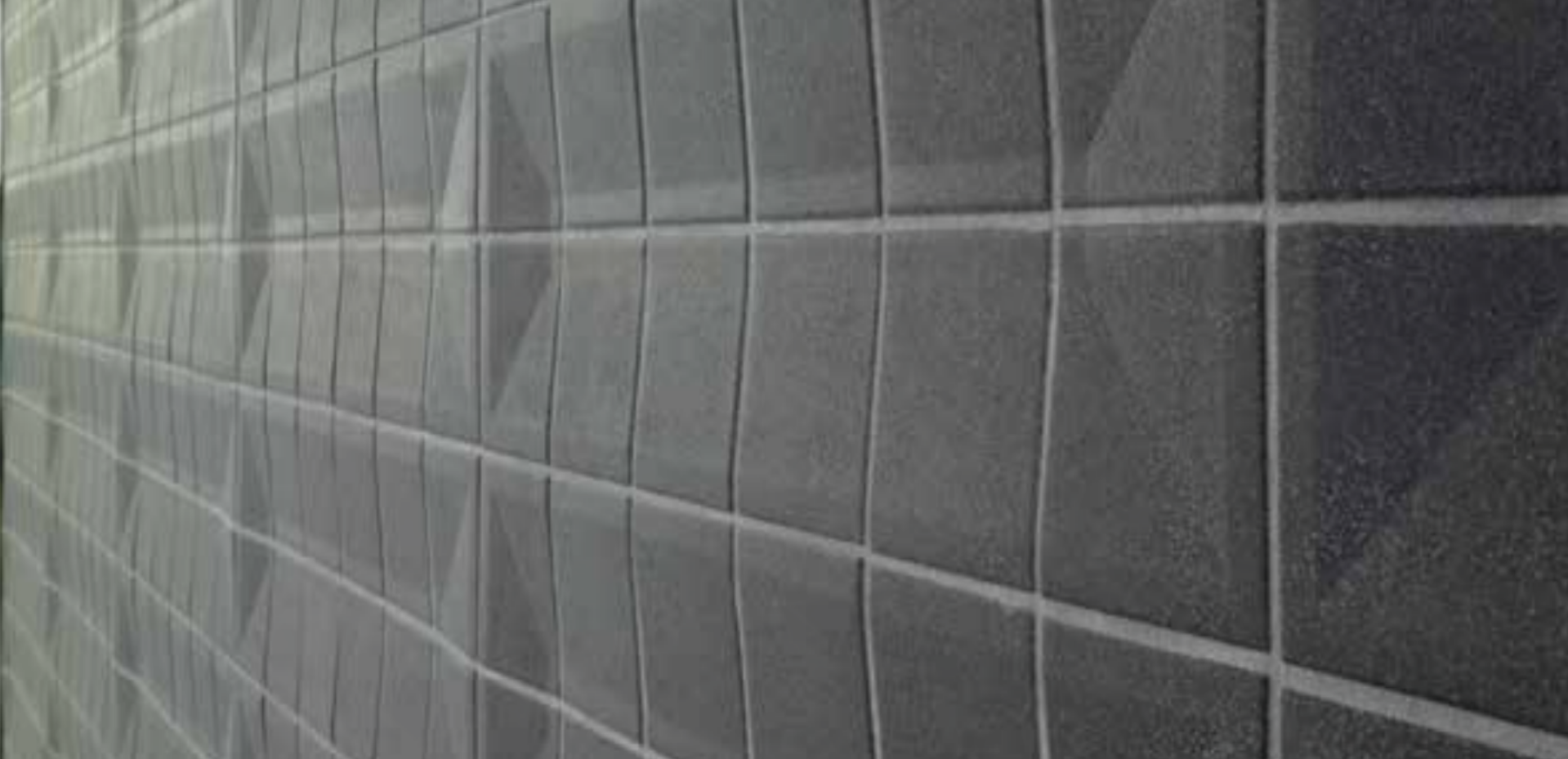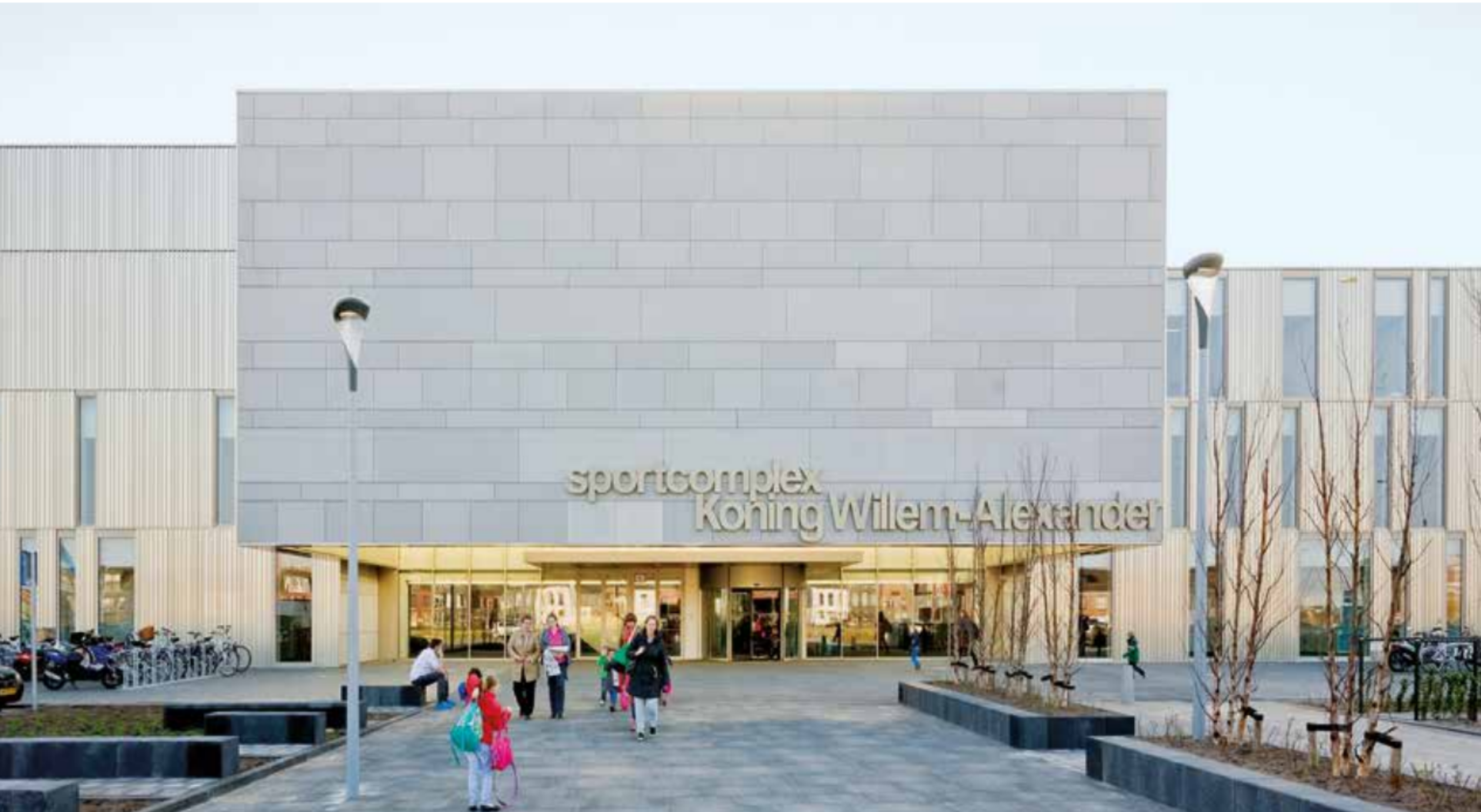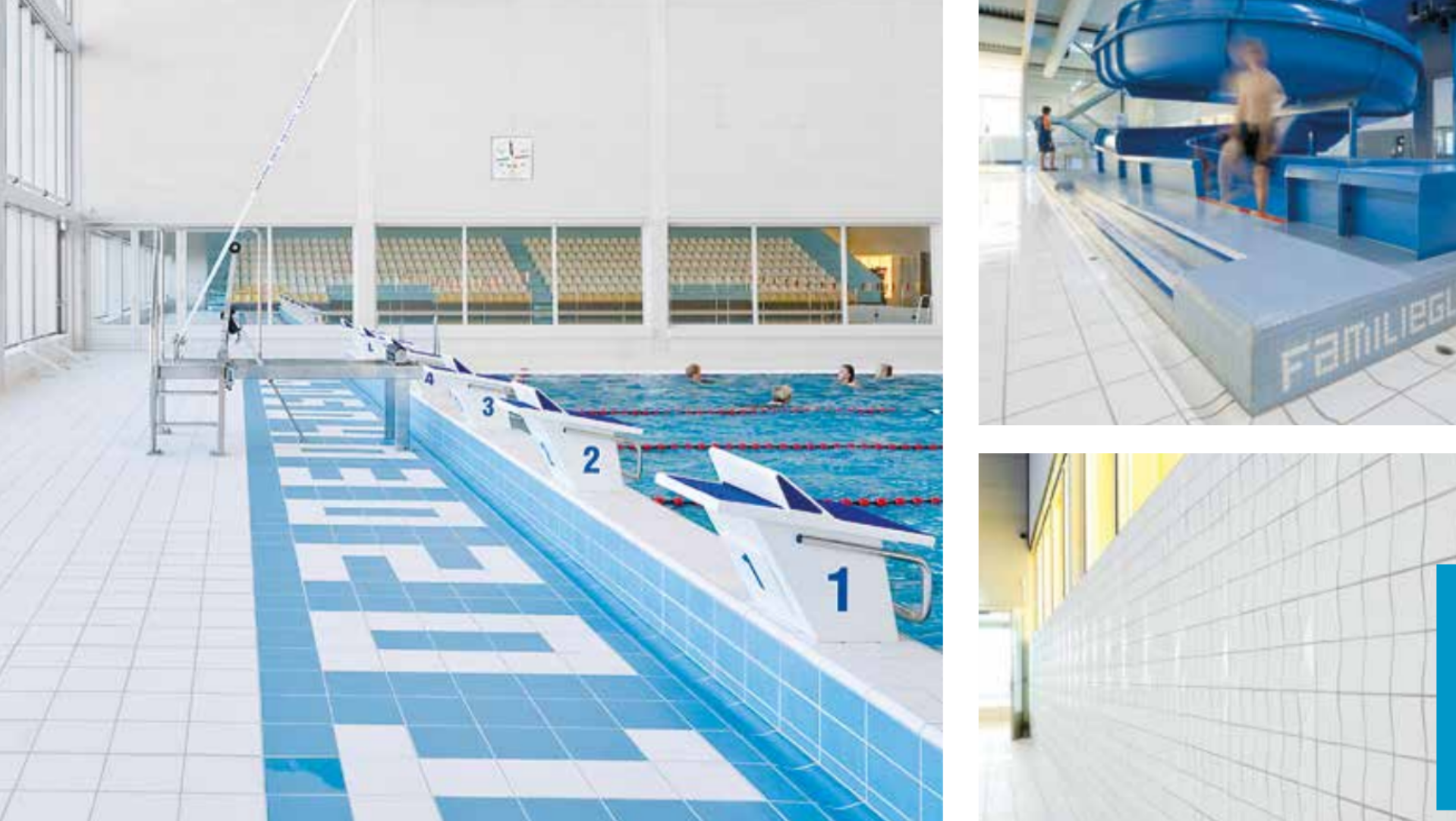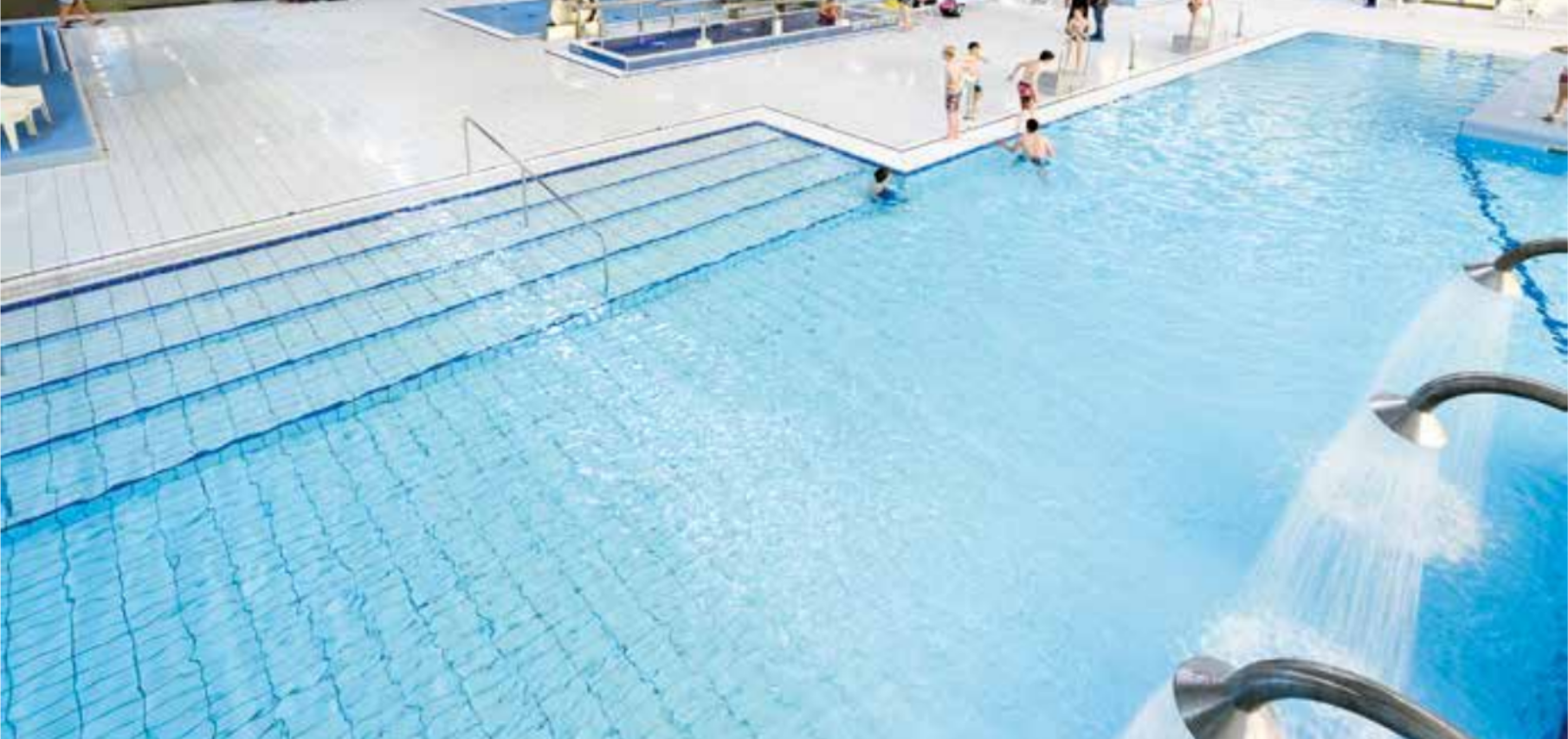References
The sound of sport
| Project name | The sound of sport |
| Location | Germany . Driedorf |
| Design by | Architects Slangen+Koenis |
| Product | Chroma |
Bei dem Bau von Schwimmbädern kann es mitunter recht lange dauern, bis man das richtige Material gefunden hat. In großen Hallen mit hoher Luftfeuchtigkeit, wo es zudem auch noch warm ist und strenge Hygienevorschriften eingehalten werden müssen, sind die Möglichkeiten beschränkt. Der Sportcomplex Koning Willem-Alexander, den Slangen+Koenis Architekten im niederländischen Hoofddorp realisierten, ist nicht nur ein Beispiel für die ausgezeichnete Beständigkeit von Keramik unter Extrembedingungen, sondern zeigt auch eine neuartige Anwendung im akustischen Bereich.
When building swimming pools, it can take quite some time until the right materials are found. In large halls with high humidity where it is also warm and stringent hygiene requirements need to be adhered to, the possibilities are rather limited. The Sportcomplex Koning Willem-Alexander realised by architects Slangen+Koenis in Hoofddorp is not only an example of the outstanding durability of ceramic under extreme conditions – it also represents an innovative application in the area of acoustics.

--3D wall design with shower tub tiles--
It is our largest project to date”, reveals architect Peter Baas at the office of Slangen+Koenis which specialises in sports facilities and swimming pools. The complex comprises a competition pool and a recreational pool, a sports hall for professional sports, a sports hall for popular sports with a separate gym for rhythmic gymnastics, and a fitness area with sauna – covering a total of 20,000 m² floor space. “There's a bit of everything which makes this task so pleasant. But this also represented the challenge as we wanted a building with a clear layout and a positive atmosphere despite its extensive size.”
The building is right on Provinzialstrasse and is the first of a stretch of new building projects extending along two kilometres. The development and the road are separated by a dam although urban development plans envisage some of the buildings being built into the latter. This has resulted in the sports complex being attributed an elongated shape. “We've tried to divide it up as much as possible to prevent it from appearing too overwhelming later”, explains Baas. Each of the individual functions has been attributed a specific volume with varying heights which means the complex is reminiscent of an ensemble of boxes.

Ceramic tiles from AGROB BUCHTAL pervade the interior design. “We selected this product on account of the swimming pool area where stringent hygiene and safety guidelines apply. Floors must be easy to clean but should also offer sufficient grip. In order to create a uniform and tranquil design, we used the same tiles in the changing facilities and in the sports areas.” One particular feature of the tiles in the swimming pool is their acoustic application. Using a standard product – an inclined moulded part for shower tubs – the architects designed a 3D wall which diffusely reflects noise. Baas:
It's easy to find your way from the entrance in the heart of the building: the “dry” sports are to the left, the “wet” bathing section is on the right, with the fitness and sauna areas above them. Go through the changing areas and you’ll find the large sports halls behind. “We tried to keep everything bright”, says Baas. “Straight corridors, long visible lines. The entire 220 metre length of the building can be seen from the hall.”

“The idea evolved during the actual process. It is possible to contain noise in sports facilities by securing perforated panels made of absorption material to the walls and ceilings. In the swimming pool speech zone, i.e. from the floor to a height of 2.5 metres, this is not possible on account of the humidity prevailing there. One tried-and-tested solution for this situation is to mount glass panels at an angle of only a few degrees thereby diverting sounds upwards. We realised this principle using tiles.”
Richard Ypma, who is involved in the design in his capacity as a Dutch representative of AGROB BUCHTAL, is enthusiastic about this innovation: “Sound plays a key role in projects of this type. And poor acoustics are fatal in such a large hall. The great thing about this design is that it not only has a measurable influence on sound – it also has an aesthetic added value. The architects have laid the tiles in such a way as to create patterns and the wall is attributed an attractive appearance, making it come to life.” Proven products were also used creatively in other areas. The numbers of the lanes in the competition pool, for example, are integrated in the floor using azure-blue non-slip tiles. “Specially designed for this project andunique in the Netherlands”, adds Ypma, who asserts that this underlines the various qualities of the material. “Ceramic is resistant to temperatures and dirt, is color-fast and non-slip. I like to compare it to the Chinese porcelain recovered from sunken trading ships belonging to the Dutch East India Company. Although it had lain on the sea floor for five hundred years, you could still use it to set the table today. The same principle applies for these tiles. And ceramic is a natural product as well as being fully recyclable. This sustainability is particularly appropriate nowadays. And especially in an environment where only a few materials are actually possible – it represents the ultimate solution.”


Address : 9F, No.29, Sec. 3, Minsheng E. Rd., Zhongshan Dist., Taipei City 104, Taiwan, R.O.C.
Tel : +886-2-2506-7979
Fax : +886-2-2506-7262
E-mail : hhc@hwahanc.com


